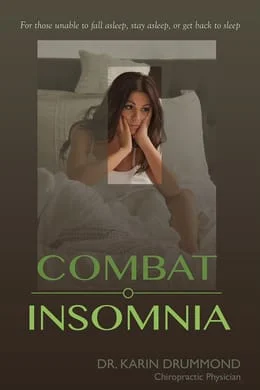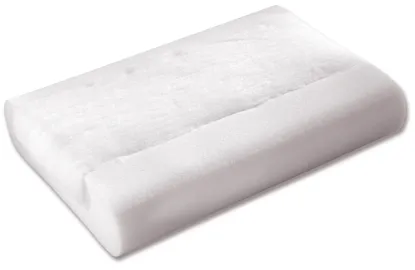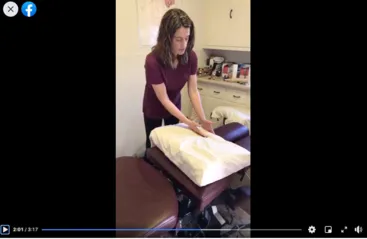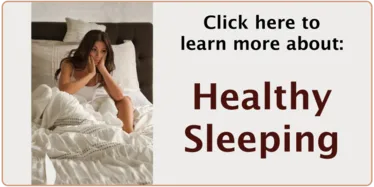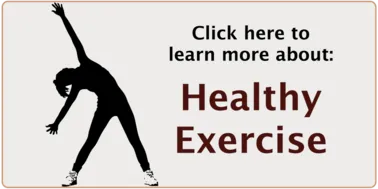insomnia facts:
Are you one of the third to a half of the adult population experiences insomnia in a given year?
CLICK HERE for more insomnia facts
- types of insomnia and how it impacts your health
CLICK HERE to better understand the brain and it's sleep-wake cycle
- the more you understand the brain, the better you will understand your insomnia and what do to about it
CLICK HERE to better understand how stress can cause insomnia (and vice versa)
- and to learn the healing power of tears
CLICK HERE for signs your insomnia could be a sign of a serious condition
- if you are suffering from insomnia, talk to your health care provider (hopefully that is one of us here at Drummond Chiropractic).
If you are taking sleeping pills, or wonder if you should be, CLICK HERE
HERE WE REVEAL THE FOLLOWING
1. Surprising facts about sleep like:
a. The Sun Effect
b. The Light Effect
c. The Schedule Effect
d. The Exercise Effect
e. The Allergy Effect
2. The Best Sleep Positions
3. How to choose the perfect pillow for your specific needs
a. For Side Sleepers
b. Back Sleepers
c. and more...
4. The Best Mattress
a. For Large People
b. Small People
c. and everything between
5. Room conditions best for sleep
6. Supplements that can help sleep
.... and more!
Why Wait? See how we can help you sleep better!
You don't have suffer. Why wait?
Below are excerpts from Dr. Karin's Book on Insomnia.
Good quality sleep:
FOR GOOD QUALITY SLEEP, I cannot stress the importance of having the best possible mattress. You (hopefully) sleep at least eight hours of every twenty-four hours. This is one-third of your life. If you are going to spend money on one item, it should be your mattress.
The best mattress that I know of.
For years, I have looked for the perfect mattress. I had settled for foam mattresses, or at least mattresses topped by a foam topper. Then, finally, I came across what I consider to be the best mattress ever.
The Innate Sleep Orthopedic Sleep System
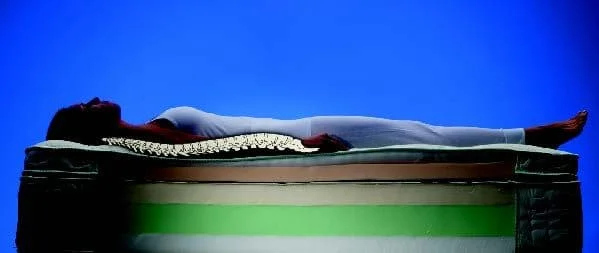

It took a team of engineers, guided by a chiropractor, to create a mattress that exceeded my wildest expectations.
You can learn more about this mattress:
Or visit http://innatesleep.com.
Enhancing your current mattress
If you choose not to invest in an Innate Sleep System mattress, your mattress should be firm for support with at least an inch of foam on top to minimize pressure on your body. I recommend a separate foam topper so you can replace it every three to five years (foam loses its supportive qualities within this time). You should also flip a regular mattress every three months or so, which extends the life of the mattress.
The Best Sleep Positions
The best ergonomic way to sleep for the health of your spine is on your back with a small pillow contoured to support your neck and a wedge pillow under your knees (refer back to Figure 5-3). When your knees are bent, your back flattens out and is fully supported by the mattress.
Not only is sleeping on your back better for your neck and back, but it also keeps your face looking younger because it keeps you from rubbing the skin on your face against a pillowcase all night.
If you are a side sleeper, sleep with a thick neck pillow so your neck remains in a neutral position.
If you sleep with your head tilted to one side, you will compress the nerves on the down side and pull on the nerves on the up side. The compression or stretching of the nerves can lead to neck pain and possibly headaches.
When sleeping on your side, you should also sleep with a pillow between your knees to keep your hips and thighs parallel to one another (helping to keep the lower half of your body in a neutral position). Otherwise, you may strain your pelvis, tailbone, hips, and/or knees as you sleep.
Choosing the Perfect Pillow
I personally use the Pillo-Pedic pillow from Foot Levelers. Because it has a soft and hard side with thick and thin edges, the Pillo-Pedic pillow is like having four pillows in one. The design makes the Pillo-Pedic great for both side and back sleepers.
If you are a side sleeper, lay the Pillo-Pedic with the hard foam side up (Figure 5-7). When lying on your side, you don’t want or need your head to sink into the pillow like you do when you are sleeping on your back.
If you sleep on your back, lay it with the soft side up (Figure 5-8). This allows your head to sink into the pillow and your neck to be supported by the firmer foam edge.
The Pillo-Pedic has a thick and thin firm foam edge. Whether you lie on your back or side, place the thick edge against your shoulders if you have a long neck; use the thin edge if you have a short neck.
Foot Levelers also offers other pillows for specific needs. They can even make a custom-made pillow based on four measurements taken by your healthcare provider.
To learn more, check out my Facebook live:
Or visit:
http://www.footlevelers.com/traction/index.php/pillows/exclusively-yours
I always suggest they discuss this with their chiropractor to be sure the positioning is ideal for the conditions that they are working on (i.e., right shoulder tendonitis patients should avoid sleeping on the right side).
Pillow advice from Dr. Rob Schroeder: CLICK HERE
If your sleep is interrupted with back pain, neck pain, a headache, or numbness in your arms, hands, legs, or feet, you are pinching your nerves while you sleep, and you need to change something.
If you wake up with more pain than before you went to sleep, you probably need a new or better mattress and/or pillow. Pain affects the quality of sleep and can interrupt it, and a new mattress and or pillow can help. Talk to your healthcare providers and employees at your local mattress stores to find someone who can help you with your specific needs.
SURPRISING FACTS ABOUT SLEEP
If you have a clean bill of health, poor sleep hygiene may be the cause of your sleep challenges.
Sleep hygiene involves living in a way that physically and biochemically helps the body sleep.
Sun effect
Remember the internal clock you have in your hypothalamus? The internal clock depends on sunrise and sunset to regulate it so your body can prepare for sleep as the sun sets. Exposing yourself to sun during the day and avoiding bright light before going to bed helps keep your internal clock in check and on schedule.
Light Effect
Before the advent of electric lights, it was normal to go to bed when the sun went down, wake up in the middle of the night to stoke the fire (with its red glow) and have some fun, and then go back to bed.
Old texts talk about this first and second sleep. It was also common to have naps in the middle of the day, especially on long hot summer days when the days were longer, causing later bedtimes and earlier morning times.
Now we have artificially set times that we go to bed and wake up, disrupting our natural sleep cycles. So if you find yourself regularly waking up in the middle of the night, do not despair. This could be your natural cycle.
If you have trouble falling asleep, avoid overhead lighting and looking at backlit screens for at least two hours before bedtime.
Artificial lighting messes with our internal clock, making our light-sensitive brain think it is still high noon. As a result, our brain delays preparing for sleep and doesn’t produce melatonin.
At bedtime, switch from overhead lighting to bedside or table lamps, which mimic the sunset.
If you must look at a screen at night, adjust the screen to the lowest level of brightness, wear red glasses, or use a “twilight” app because the blue light emitted from computer screens hinders melatonin production.
If you wake up in the middle of the night, avoid bright light (especially white or blue light), release some stress with some light activity, and then attempt to go back to sleep. When I wake up in the middle of the night and have trouble going back to sleep, I take a dose of melatonin, put on my red glasses so I can work on the computer without messing with my internal clock, work on the computer for less than an hour, and then put the computer away and meditate until I fall asleep.
Schedule effect
One lifestyle habit that aids in sleep is keeping a regular schedule in which you get up and go to bed at the same time every day.
Getting into a regular routine helps keep our internal clock in rhythm. The rising and setting of the sun is the most important factor in keeping our internal clock in rhythm, but with the advent of artificial light, this is often skewed by having bright lights on well past sunset.
When you work a night shift, your internal clock is forced out of synch with natural light and dark cycles. The good news is that if you keep a regular schedule of light versus dark, your body can acclimate to a night shift. But if sometimes you stay up late and sleep in, and other times have to wake up early, this irregular schedule messes with your internal clock, making it difficult for your body to know when to prepare for sleep, similar to what happens when you have jet lag (see Chapter 1 for details on jet lag).
If you feel tired during the day, allow yourself to take a nap in the middle of the day, or at least rest, so you do not crash and fall asleep too early that night, which would mess with your regular sleep schedule.
Exercise effect
A physically exhausted body sleeps better. It’s best to exercise first thing in the morning for several reasons.
One, you are more likely to do it. Later in the day you may be too busy or tired to exercise.
Two, exercise energizes you. You generally want to avoid intense stimulation right before going to sleep.
Still, I believe it is important to exercise every day, so if you cannot exercise during the day, it is better to get some exercise in the evenings than not at all.
With that said, if you suffer from insomnia, make it your daily routine to exercises every day by noon, if not first thing in the morning, for at least thirty minutes.
Room conditions for better sleep
Your room should be as dark and quiet as possible. Our brain is light sensitive, as discussed earlier in the chapter, so light can impair sleep. Use blinds or curtains to block outdoor light, and close your bedroom door if light shines into your room from other parts of the house.
Our brain’s thalamus determines whether external stimulation needs the attention of our consciousness. This autonomic gatekeeper allows us to sleep unless we need to be awakened to face a potential threat. If noises are present, our sleep can be interrupted.
We may not be able to control some aspects in our life that impair sleep, but the volume of noise should be controllable. So keep your sleeping area as quiet as possible.
Soothing Sound Effect
If you can hear noises outside of your control when you are trying to fall asleep, try playing soothing sounds to drown out the interfering background noises. Parents and caregivers read or sing to children at bedtime because soothing sounds can lull them to sleep. This technique can also work on adults.
You can try listening to lullabies, a recorded story, or audiobooks with calm or soothing content. Don’t choose something stressful or a recording that has a laugh track that might wake you up after you fall asleep!
I often listen to soft rhythmic drumming or meditative music if I don’t fall asleep after my contract-relax muscle routine. Some find white noise machines helpful (more on this in a later chapter).
Allergy Effect
Allergies occur when the body attacks pollen antigens because it thinks they are antigens on a virus or bacteria. This confusion leads to cold-like symptoms but without the actual sickness. When your body is confused, its defenses can hurt you instead of help you. Allergies cause congestion, which negatively affects sleep.
If you suffer from seasonal allergies, try eating a teaspoon of local honey; the beehive should be within 25 miles of your home (as the crow flies). Honey from a hive close to your home is filled with pollen antigens you are breathing. When you eat it, the body learns that the pollen antigens are “self”—something good that you assimilate into your body for energy—and not a “not self”—a foreign thing that needs to be attacked.
Self-cranial massage techniques and chiropractic manipulation that focuses on the head can help the sinus symptoms that often occur with allergies.
To learn more, check out my Combat Headaches book available in our office in Bloomington, Indiana and on Amazon.
To learn more, CLICK HERE
Pet Effect
As much as we love our furry friends, it is not healthy to let them sleep in or on your bed. Sleeping with your pet negatively affects your sleep. Your pet’s movements and noises interrupt your sleep. Sorry to be the bearer of this news, but if you suffer from allergies and/or insomnia, do not sleep with your pet(s
For the Stress Effect, CLICK HERE
So if you are looking for advice on how to sleep well, and would like to see how chiropractic treatments can help you sleep better, we are the chiropractors for you.
Supplements that can help with sleep
Melatonin
Melatonin is produced naturally in the body when the sun goes down to prepare the brain to sleep. However, in modern day living, we have artificial light that makes it seem "high noon" all day. Then we shut off the light and expect our brains to be ready to sleep. This is why taking Melatonin before going to bed often helps people fall asleep.
CBD
CBD helps some people stay asleep. To learn more, CLICK HERE.
If you are looking for supplements, but unsure which one to pick, check out https://us.fullscript.com/welcome/drummond

TO be well, YOU NEED TO
MOVE WELL, SLEEP WELL AND EAT WELL
I hope this information helps you sleep well, so you wake up with enough energy to move well, and be encouraged to eat well.
To learn more about how we treat here at Drummond Chiropractic, CLICK HERE.
To go back to our home page, CLICK HERE.
Why wait?
to schedule an appointment.
Drummond Chiropractic, LLC
Your Insomnia and Sleep Health Experts
Home of the #1 Chiropractor
565 N Walnut St,
Bloomington, IN 47404
(812) 336 - 2423

